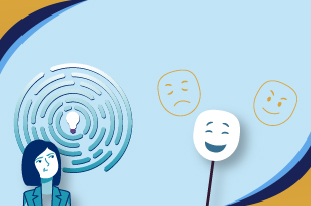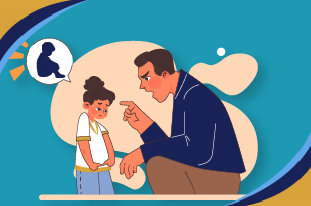Childhood adjustment disorder occurs when children cannot handle a significant life transition or stressor. Children are usually adaptable; no situation can overwhelm their ability to adapt emotionally or behaviorally, though some factors can. The condition is not a mere passing response to transition but includes consistent and sometimes severe feelings that hinder a child’s routine.
In this blog, you will learn about adjustment disorder, how children display it, adjustment disorder treatment plans, treatment goals for adjustment disorder, and various strategies for helping them cope with this particular experience.
What Is Adjustment Disorder?
The identification of adjustment disorder is a psychological reaction to a specific stressor. These stressors in children can be stressful events such as moving from one school to another or even parental separation for minor stress-inducing events to life-debilitating events such as the burial of a loved one, family conflict, and disasters, among others. Additionally, adjustment disorders can lead to several mental health illnesses, such as acute stress disorder, dissociative disorders, psychosis, mood disorders, and eating disorders.
It is said that adjustment disorder is diagnosed when the child’s symptoms are much more severe than the stressor. Such symptoms are most commonly reported within three months of the event and may cause significant social, academic, or domestic performance deficits.

Types of Adjustment Disorder
There are several subtypes of adjustment disorder, each defined by the specific nature of the child’s symptoms:
- Adjustment Disorder with Anxiety: In this subtype, children also might display excessive worry, fear, and nervousness, as they are in response to the identified stressor. This may result in extreme worrying concerning the following events: separation anxiety or inability to focus.
- Adjustment Disorder with Depressed Mood: This type comprises the child presenting with low mood or depressed demeanor, lack of motivation, and withdrawal from activities that were previously enjoyed. They may cry, be more shy, and demonstrate low self-esteem.
- Adjustment Disorder with Mixed Anxiety and Depressed Mood: Sometimes, children can have both anxiety and depressive signs; for instance, they constantly feel sad, grumpy, or nervous.
- Adjustment Disorder with Disturbance of Conduct: This form is marked by behavioral concerns, including aggression, non-compliance, or other unsafe behaviors. Children may also do this to upset stress because they feel negative results before they expect negative results from certain behaviors.
- Adjustment Disorder with Mixed Disturbance of Emotions and Conduct: This subtype is characterized by the disorder’s emotional and behavioral forms. A child may present features of both anxiety or depressive disorders and conduct disorders.
- Unspecified Adjustment Disorder: As in the cases presented above, the diagnosis is made where the symptoms do not fall under any of the above classifications. These might be physical ailments, failure to interact with peers, rejection of average energetic engagement in activities without explaining reasons, or not exhibiting typical emotional or behavioral problems.
Read More: Major Depressive Disorder In Children: A Guide For Parents
Possible Causes of Adjustment Disorder in Children
Identifiable stressors trigger adjustment disorder, and while these can vary widely, certain situations tend to be common culprits in children’s lives:
- Family Changes: Stressful family changes, including divorce, separation, the birth of a sibling, or the death of a family member, can be distressing for children. They indicate that change can be perceived as stressful even when described as positive, such as a new marriage or the birth of a step-parent.
- Moving or Changing Schools: Generally, children feel secure when familiar people in the environment are around them. Changes in homes or schools of residence negatively affect them, leading to stress.
- Bullying or Peer Pressure: Hindrances, including bullying or the desire to fit in a particular group, are overwhelming elements to a child. It makes the affected subject succumb to loneliness, anxiety, and general low self-esteem due to these experiences.
- Academic Pressure: Problems in school, school work, being behind, or feeling pressured by school work can also lead to adjustment disorder.
- Traumatic Events: Severe stressors include those that endanger a child’s psychological well-being and may lead to adjustment disorders. Such stressors include experiences of violence, accidents, or disasters.
Symptoms Of Adjustment Disorder In Children
The manifestations of adjustment disorder depend on the child’s age, the personality peculiarities, and the type of stressful event. However, some common signs that may indicate a child is struggling with adjustment disorder include:
Emotional Symptoms:
- Sadness or Crying: The child may look more cried or may say things like ‘I’m sad, I want to die,’ and the like.
- Irritability: Prominent features include a deterioration in mood, becoming easily frustrated as well as sudden changes in temper in children diagnosed with adjustment disorder.
- Anxiety: Some children may be more anxious than usual, have separation anxiety, or become easily stimulated regarding new settings.
- Withdrawal: They may avoid contact with people, friends, or the things they once enjoyed doing earlier.
- Low Self-Esteem: Children may develop low self-esteem or believe they are the reason for what is happening to them or around them.
Behavioral Symptoms:
- Defiance: A child may misbehave, be defiant, or tend to kick at certain ages.
- Aggression: In some cases, adjustment disorder causes aggressive behaviors toward other individuals, vocal and physical.
- Trouble in School: This may manifest in the child receiving poor grades, demotivation, or acting out during ongoing school sessions.
- Risky Behaviors: Older children may even take drugs or alcohol, start cutting themselves, or practice other unhealthy behaviors.
Physical Symptoms:
- Sleep Issues: Insomnia or oversleeping, which may be attributed to the disruption of sleep brought about by adjustment disorder.
- Appetite Changes: Some children may lose appetite, and some may overeat when stressed.
- Headaches or Stomach Aches: Adjustment disorder children tend to have stress-related symptoms that manifest as signs of headaches or stomach pains.
Diagnosis Of Adjustment Disorder In Children
In diagnosing adjustment disorder in kids, one must consult a medical officer, a child psychiatrist, or a clinical psychologist for an accurate diagnosis, treatment and medication management. The diagnosis process typically involves:
- Clinical Interview: A mental health practitioner will ask the child and the parents questions about the stressor, the child’s affective and behavioral changes, and how long the symptoms have persisted.
- Behavioral Observations: Behavioral observations are often conducted in different contexts, such as at home and school, to determine how the child deals with a stressor in different situations.
- Assessments and Questionnaires: Investigational tools like the behavior rating scales/emotional assessment can aid in the determination of the level of symptoms and give a better picture of the child’s health status.
In cases where a child is diagnosed with adjustment disorder, the child develops symptoms in response to an identifiable stressor and experiences heightened levels of distress that would prevent normal functioning.
Read More: Generalized anxiety vs panic disorder: A Closer Look
Therapies Available for the Management of Children’s Adjustment Disorder
Adjustment disorder is treated through efforts aimed at providing the child with appropriate adaptive mechanisms to address the emotional and behavioral problems they are having. Here are some common approaches:
- Cognitive Behavioral Therapy (CBT): CBT enables children to recognize negative thinking styles and transform them into constructive ones. This therapy helps them learn how to handle stress responses to feelings and react appropriately.
- Play Therapy: Most widely used for young children, play therapy provides a means for children to act out their disturbed feelings and work through them.
- Family Therapy: It is always wise to involve the family in therapy, as every single aspect that could be causing the child’s adjustment disorder is dealt with. It also offers the parents a way to help their children with their emotional health.
- Supportive Counseling: Children sometimes need nothing more than someone or somewhere to express their emotions. Counseling is an affirmative approach that lets the child say what they want without criticism.
- Parent Education: The parents need to learn about adjustment disorder and how they can assist the child in the home. This includes ways in which parents can ensure the child feels supported, communicate effectively, and enable the child to cope with stress.
Wrap Up!
Adjust disorder is a relatively widespread mental state disorder in children that may have a negative influence on a child. It is essential to know the cause, sign, and child adjustment disorder treatment plan for children suffering from this disorder to help them. After intervention and support, children with adjustment disorder ought to be able to deal with the issues affecting them and learn new methods of handling things that stand in their way. If you feel that your child is suffering from adjustment disorder, then now is the ideal time for you to connect with Orange Coast Psychiatry telehealth services today!


















